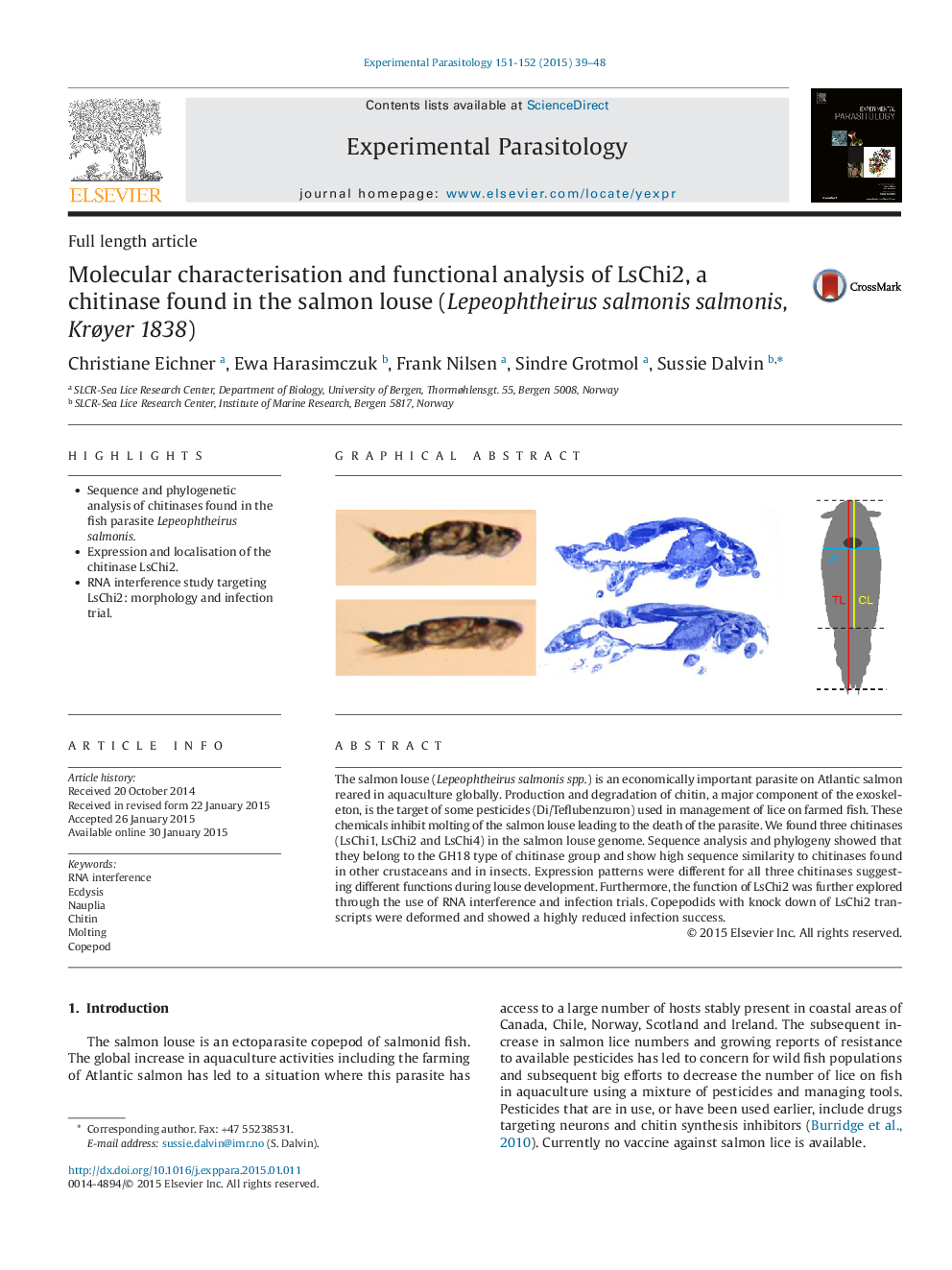| Article ID | Journal | Published Year | Pages | File Type |
|---|---|---|---|---|
| 4371021 | Experimental Parasitology | 2015 | 10 Pages |
•Sequence and phylogenetic analysis of chitinases found in the fish parasite Lepeophtheirus salmonis.•Expression and localisation of the chitinase LsChi2.•RNA interference study targeting LsChi2: morphology and infection trial.
The salmon louse (Lepeophtheirus salmonis spp.) is an economically important parasite on Atlantic salmon reared in aquaculture globally. Production and degradation of chitin, a major component of the exoskeleton, is the target of some pesticides (Di/Teflubenzuron) used in management of lice on farmed fish. These chemicals inhibit molting of the salmon louse leading to the death of the parasite. We found three chitinases (LsChi1, LsChi2 and LsChi4) in the salmon louse genome. Sequence analysis and phylogeny showed that they belong to the GH18 type of chitinase group and show high sequence similarity to chitinases found in other crustaceans and in insects. Expression patterns were different for all three chitinases suggesting different functions during louse development. Furthermore, the function of LsChi2 was further explored through the use of RNA interference and infection trials. Copepodids with knock down of LsChi2 transcripts were deformed and showed a highly reduced infection success.
Graphical AbstractFigure optionsDownload full-size imageDownload as PowerPoint slide
